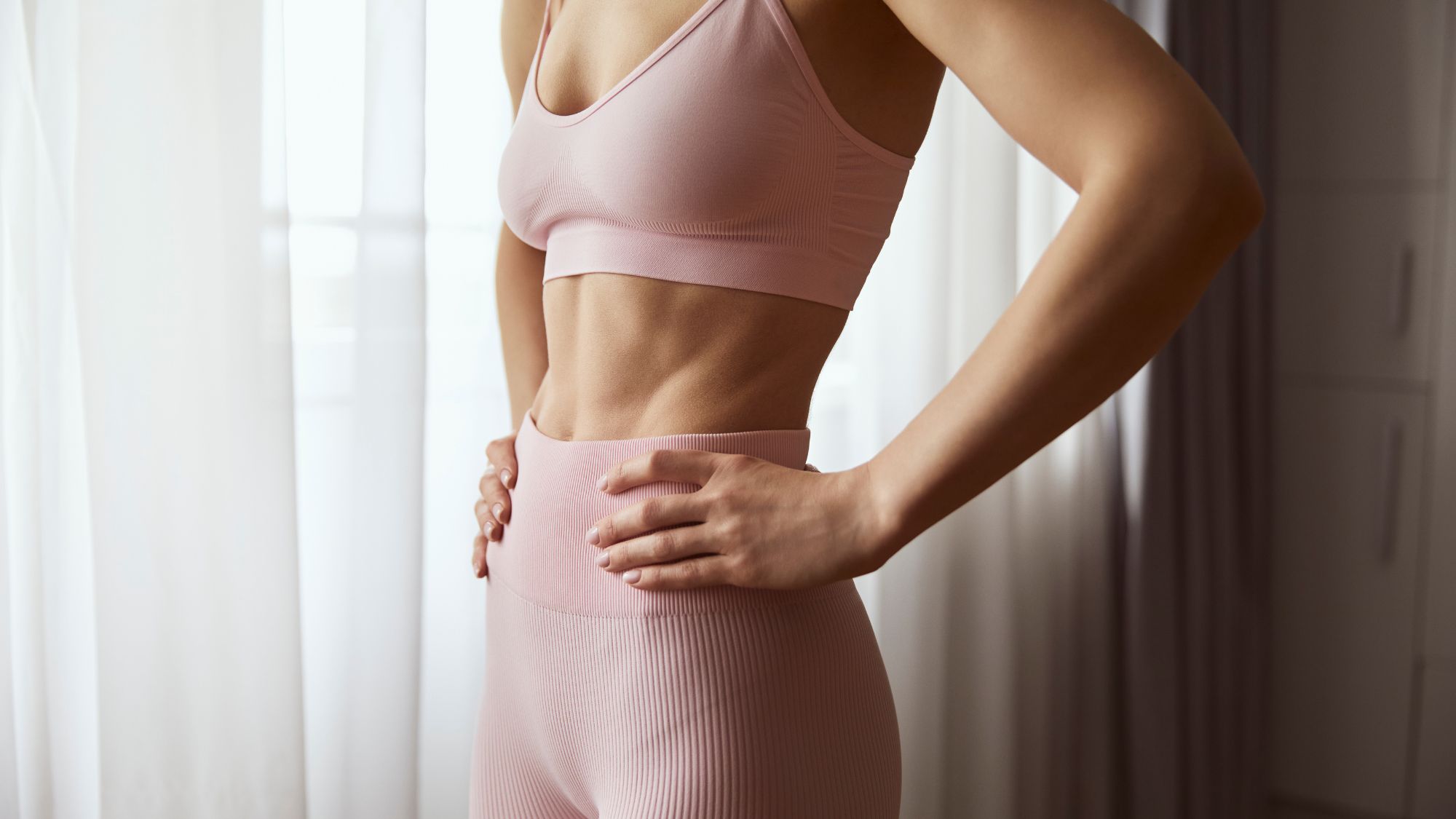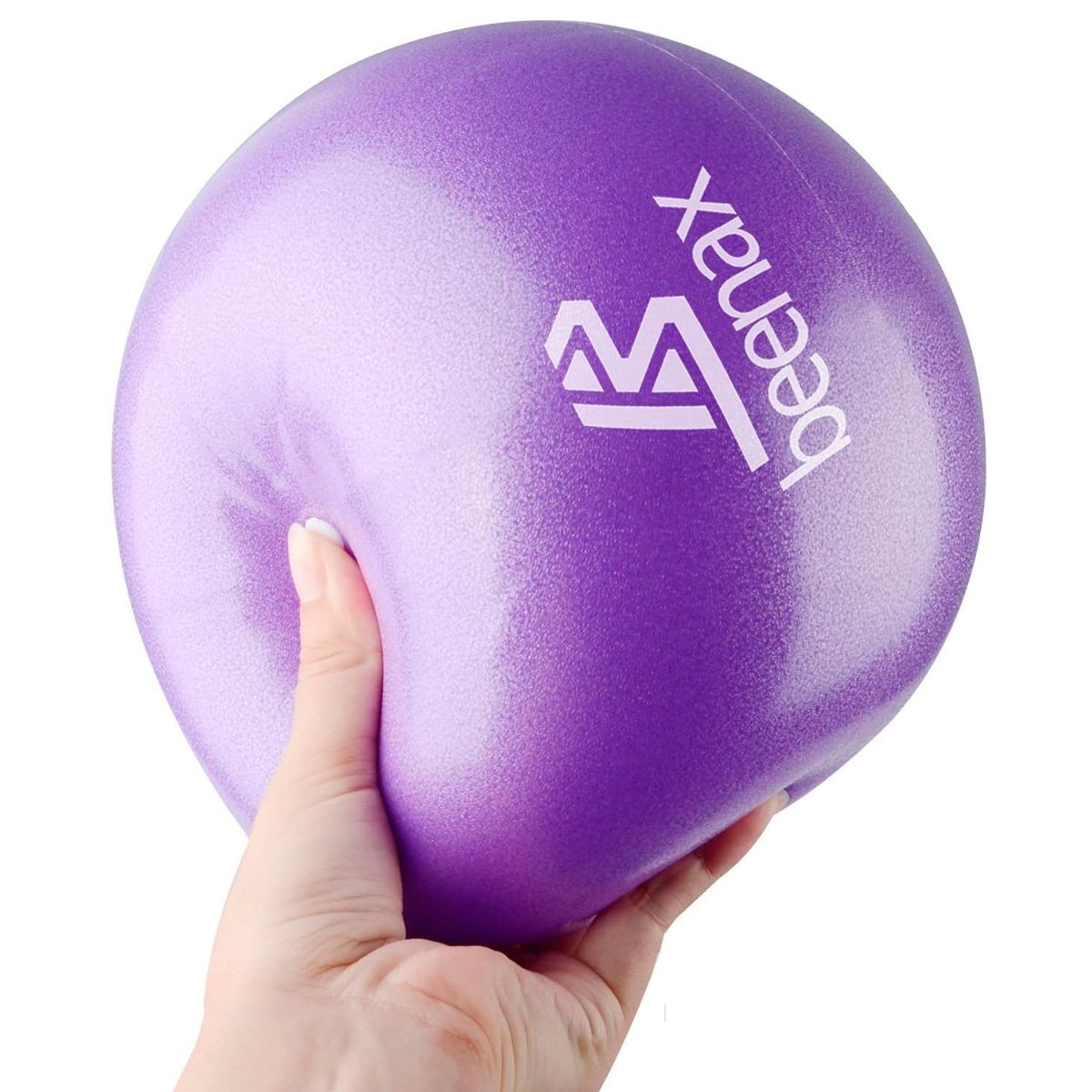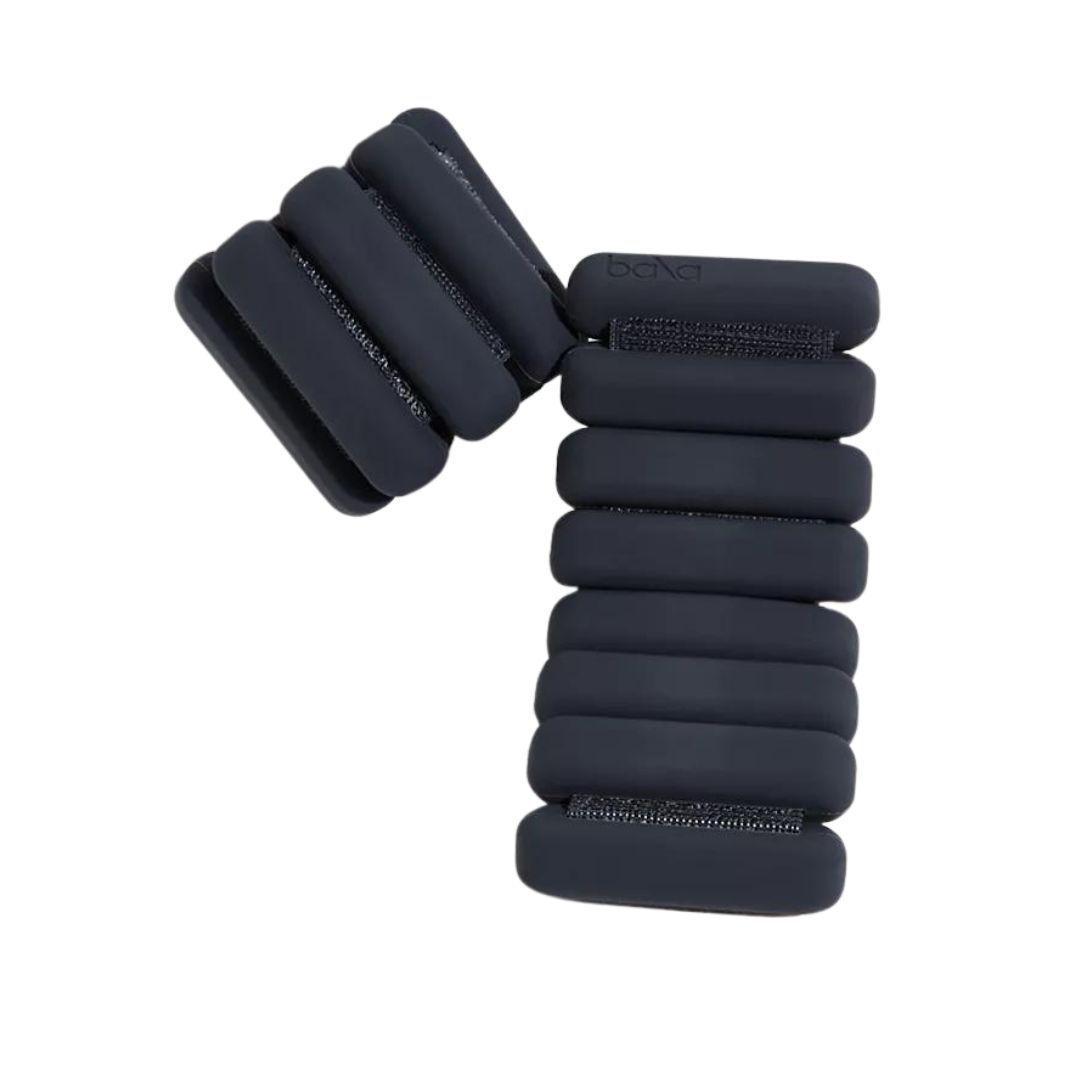Want to Get Toned From Home? 8 Best Exercises to Target Your Lower Abs That Actually Work
Prepare to feel the burn.


It’s common knowledge that exercises like planks, crunches, and V-sits can help you carve out a stronger core. But keen to incorporate some of the best moves to supercharge lower ab strength into your workout routine? Enter: the best lower ab exercises.
Before we dive in, it’s important to know that while the term "lower abs" is commonly used in the fitness arena, it’s not anatomically correct. “There are no separate muscles called the "lower abs", explains David J.Sautter, NASM certified personal trainer and performance enhancement specialist at Muscle Booster. “Instead, it refers to the lower portion of your rectus abdominis, the long, flat muscle that runs vertically along the front of your abdomen.”
According to Sautter, your rectus abdominis - which is just one of the many muscles in your core - is segmented by tendinous intersections. “Although one continuous muscle, lower abs typically refers to the section below the navel," he says. The expert says lower ab exercises can give you more bang for your buck as targeting this area tends to engage other muscles in the core, like the transverse abdominis, obliques, and hip flexors, which assist with core stability and leg movement.
The good news is that strengthening your lower abs has a multitude of benefits. For example, according to a study in Isokinetics and Exercise Science, training your abs as part of a core training routine can help you to stand a little taller. Another 2022 article found that core training can also help with trunk stability and quality of life in postpartum women. While strengthening this area also helps with back pain, posture, it can give your functional fitness a boost.
That said, if you’re turning to lower ab exercises in the hope of seeing a six-pack in the mirror, do note that spot training is a myth and ab exercises alone won’t reduce belly fat. Instead, as one study published in the Journal of Strength & Conditioning Research found, ab definition is defined by a whole range of factors, including genetics, diet and lifestyle. Not just by cracking out crunches or dominating some dead bugs.
With this in mind, here are the best lower ab exercises that personal trainers recommend completing and the benefits of doing so. For more ab and core-related content, check out our guides to the best ab toning exercises, best standing ab exercises for beginners, the best home core workouts in under 30 minutes, and the best deep core exercises. And dive into the why experts swear by the in and out ab method, here.
8 best lower ab exercises you'll want to bookmark for later
What is a lower ab exercise?
A "lower ab exercise" refers to moves that target the bottom section of your rectus abdominis, which is the long muscle that runs vertically down your front from your ribs to your pelvis. “When people talk about a six pack, it's the lower abs they're referring to,” Maria Vazquez, certified personal trainer and head of training at MYWOWFIT says.
Celebrity news, beauty, fashion advice, and fascinating features, delivered straight to your inbox!
But, when it comes to lower ab exercises, Vazquez says there are two important things to remember: “First, there's no individual muscle that is called the lower abs - it's part of a longer muscle. The other is that there's more to your core than just the abs, as there are several key muscles that work together, including the rectus abdominis, the transverse abdominis, the internal and external obliques, and even the pelvic floor. Other nearby muscles in the lower back and hips also help when it comes to core strength and stabilisation."
Therefore, while it’s all well and good to want to strengthen your lower abs, the best core workouts, which work more than just your rectus abdominis, can help you improve your functional fitness and even lower your risk of injuries and back pain. So you're essentially getting more bang for your buck.
What are the benefits of lower ab exercises?
You might be interested in incorporating lower ab exercises into your exercise routine for aesthetic reasons. But there are numerous health benefits associated with strengthening the rectus abdominis.
According to Sautter: “Strong lower abs enhance stability, balance, and coordination.”
Personal trainer Monty Simmons, the founder of Move With Monty, also notes that strong lower abs also contribute to better sports performance. “If your lower abs are stronger, they’ll be able to produce force faster, which is good because if your muscles can react fast, you can move more quickly and be more adaptive in chaotic sports environments,” he says. “In other sports, such as swimming, a powerful set of lower abs can help with swimming strokes by making your spine more powerful and letting you whip your legs properly.”
These benefits (and more) have been evidenced in a 2023 systematic review, published in the Biology of Sport. Researchers found that strengthening your abdominal muscles as part of a core workout resulted in improved balanced outcomes, increased throwing/hitting velocity, and an improvement in throwing/hitting distances, along with jumping distances, too.
In addition, lower ab exercises can do wonders for posture by supporting proper spinal alignment and helping guard against lower back pain. “They also play a key role in injury prevention,” Sautter adds.
For example, did you know that training your lower abs can be protective against hernias? “One of the less talked about functions of your abdominal muscles is to contain the intra-abdominal pressure that rises whenever we hold our breath or lift heavy objects,” Simmons says. “An abdominal hernia happens when the abdominal wall ruptures because it wasn’t able to handle the internal pressure caused by holding your breath under high pressure, for example, when kicking a football, doing a back somersault in gymnastics, or even doing a back squat in the gym. Having strong lower abdominal muscles increases the resistance of the abdominal wall to internal forces, which acts as a protective layer against hernias.”
So, as you can see, training your lower abs is about much more than just aesthetics. “It’s essential for overall functional strength and health,” Sautter concludes.
How do I structure these exercises into a full workout?
It’s a good question. For personal trainer Sautter, he recommends starting with a warm-up, as this is essential for any workout. “Try a quick cardio session like the treadmill or cycling to get your blood pumping,” he says. “Then do some core activation exercises, such as pelvic tilts or dead bugs, to engage your core.”
Next, Sautter suggests focusing on three or four lower ab exercises, performing two to three sets of around 15 reps each, with controlled form. Then finish with full-core moves like planks or bicycle crunches for balanced strength, and end with gentle stretches to aid recovery.
“Aim to train your lower abs two to four times a week, allowing at least one day of rest between sessions,” the expert says. “Mix these workouts with other core or full-body exercises to improve overall stability and help prevent injury.”
Best lower ab exercises to add to your workout, according to PTs
1. Reverse crunches
What? Hailed as one of the best core strengthening exercises, this humble move will see you lift your hips and lower back off the ground, working in the opposite direction of a traditional crunch.
Why? “Isolating the lower abs through the pelvic tilt and hip lift, reverse crunches really target the lower rectus abdominis and are great for building strength, with minimal strain on the lower back,” Vazquez says.
How long? Try 12-15 reps of three sets.
2. Dead Bugs
What? The rather aptly named dead bug is one of the best deep core exercises you can do to help carve out stronger abs. The bodyweight move involves lying on your back like a ‘dead bug’ and extending opposite arms and legs while engaging your core.
Why? “Targeting your lower abs and transverse abdominis, dead bugs are a great unilateral exercise that challenges each side of your body independently, improving coordination and stability while preventing imbalances,” Vazquez says.
How long? Complete 10-12 reps for three sets.
3. Leg Raises
What? Essentially, this move will see you lie flat on your back with hands under your hips or by your sides, lift both legs together to a 90-degree angle and then slowly lower them without letting them touch the floor.
Why? “I love leg raises for their simplicity,” Vazquez explains. “By lifting both of your legs against gravity, you work your lower abs and hip flexors to build strength and define your abs.”
How long? Three sets of 12 reps.
4. 90/90 breathing with ball squeeze
What? Something a little bit different! This move will see you lie on your back with your hips and knees bent at 90 90-degree angle and place a small Pilates ball or cushion between your knees. “Breathe in deeply (let your ribs expand), then breathe out slowly as if blowing out 100 candles, gently squeezing the ball and engaging your lower abs,” Lydia Mellor, a Level 3–qualified personal trainer and resident expert at Life Postpartum says.
Why? “This is great for reconnecting with your breath, core and pelvic floor,” Mellor adds.
How long? Try two to three sets of 8–10 deep breaths.
5. Box plank up-down (with ball)
What? You can think of this as a plank variation with the use of a Pilates ball. “Start on all fours with your shoulders over your hands and hips over knees, says Mellor. “Place a ball between your knees. Exhale as you gently lift your knees an inch off the floor while keeping your spine neutral and core engaged. Hold for a second, then lower.”
Why? “This exercise incorporates deep core work in a supported, low-impact position," Mellor explains.
How long? Two to three sets of six to eight lifts with a short hold.
6. Jack knives
What? This one's not for the weak-willed! Lie flat on your back with your arms extended overhead and your feet raised slightly above the floor. “You’re holding a banana shape to start, then, with a bit of arm momentum, pull yourself up into a pike position in a v-sit style pike,” explains Simmons. Return to the start position and pike up again.
Why? “This is a powerful lower ab exercise,” Simmons says. “But it also works your upper abs - this is because it requires your pelvis and ribcage to transfer force via your abdominals at the same time to project your arms and legs up into a pike position.”
How long? Three sets of five to eight reps.
7. Mountain climbers
What? A mountain climber mimics the effect of running, just in a plank position.
Why? “Combining cardio and core work, mountain climbers engage your lower abs while boosting your overall fitness,” Sautter says.
How long? Three sets of 15 reps.
8. Scissor kicks
What? Another floor-based move, scissor kicks involve lying on your back with your legs up at 90 degrees. You’ll then bring your legs out to the sides, bringing them back in and crossing them over one in front of the other in a controlled, alternating motion.
Why? “Scissor quicks activate lower abs and hip flexors while improving coordination and endurance,” Sautter says.
How long? Three sets of 15 reps.
Shop Marie Claire UK's go-to lower ab exercises kit:

Most lower ab exercises in this guide need to be completed on the floor. So keep things cushioned and comfortable with a handy exercise mat, like this 20mm-thick option, you can roll out when mastering these moves.
How can you activate your lower abs?
The best core activations can help fire up your abs. But how about activating your lower abs? “To properly activate your lower abs, focus on drawing your belly button towards your spine and pressing your lower back into the floor during movements, as this helps engage the deep core muscles,” Sautter says.
The expert suggests moving slowly and controlling your movements to keep tension on your abs.
"Exhale during the effort phase of each exercise, like when lifting your legs or curling your hips," Sautter says. "And always watch your form. If your lower back starts to arch, your hip flexors are likely taking over, so reduce the range of motion and focus on core engagement.”

Rebecca, or Becks, is a freelance journalist with more than ten years of experience in the industry. She specialises in all things health and lifestyle and has written for a number of brands including Women's Health, Stylist, the Evening Standard, Good Housekeeping, The Telegraph, Live Science, Tom's Guide and Fit&Well. Becks also writes copy for a number of brands and small businesses.
When she's not weight training, tracking down the best gym leggings, reading a book or at her desk typing away, you'll find her in the kitchen perfecting a new recipe or bake.









